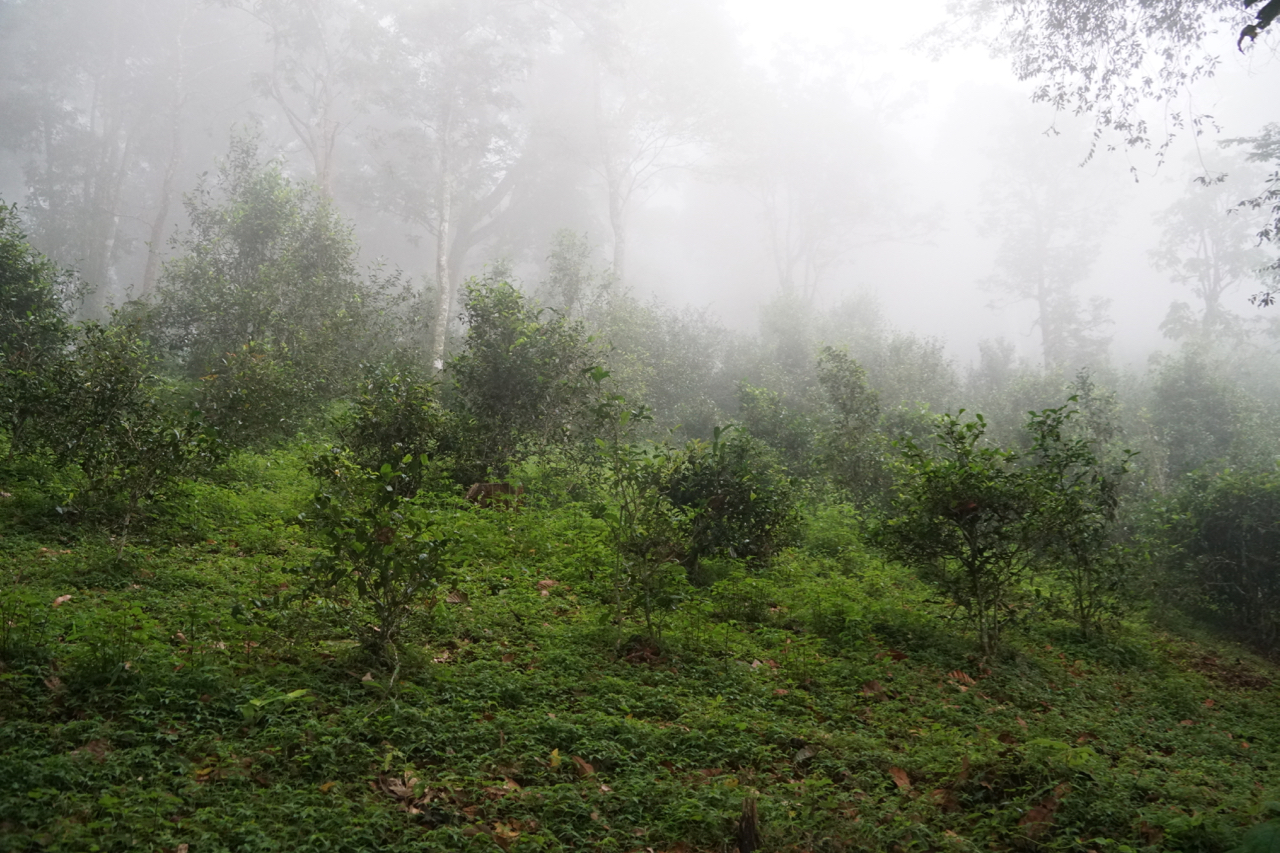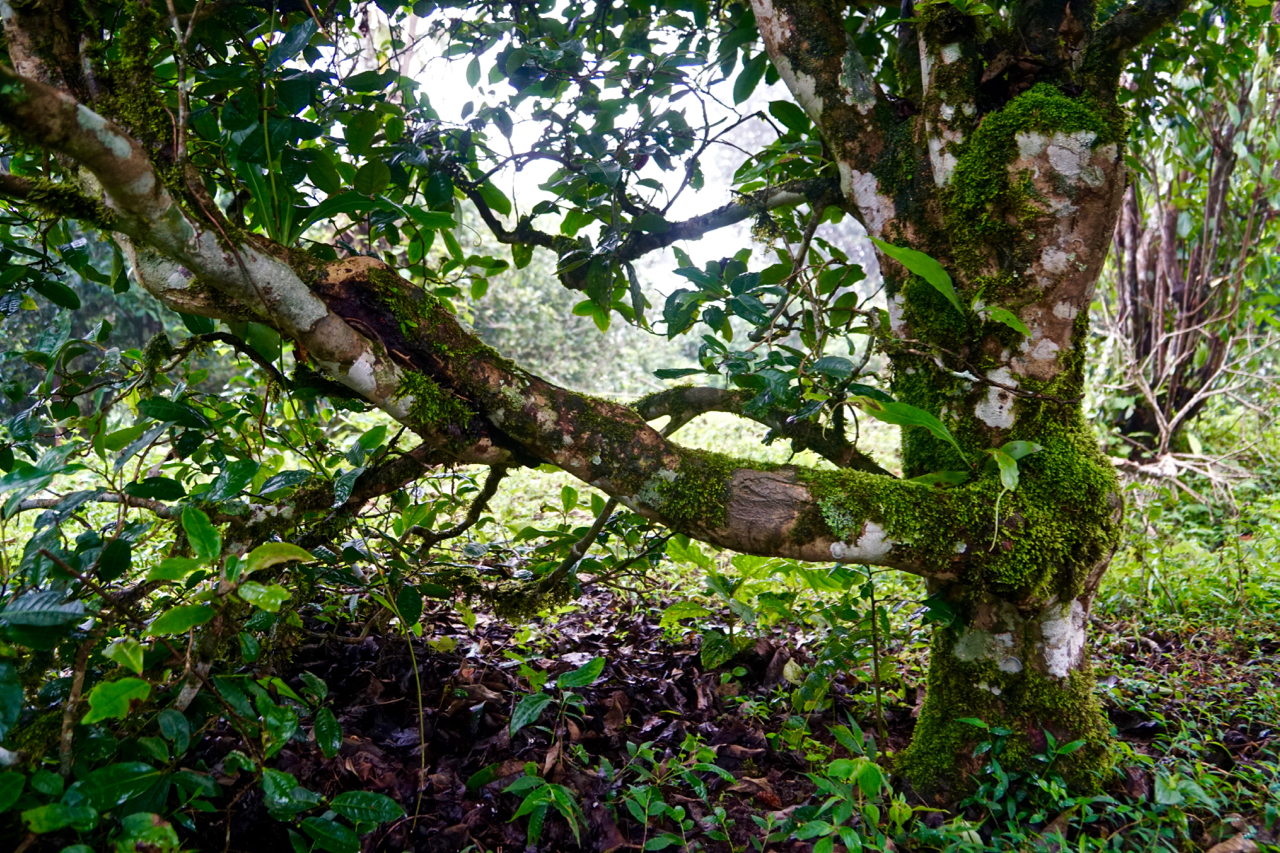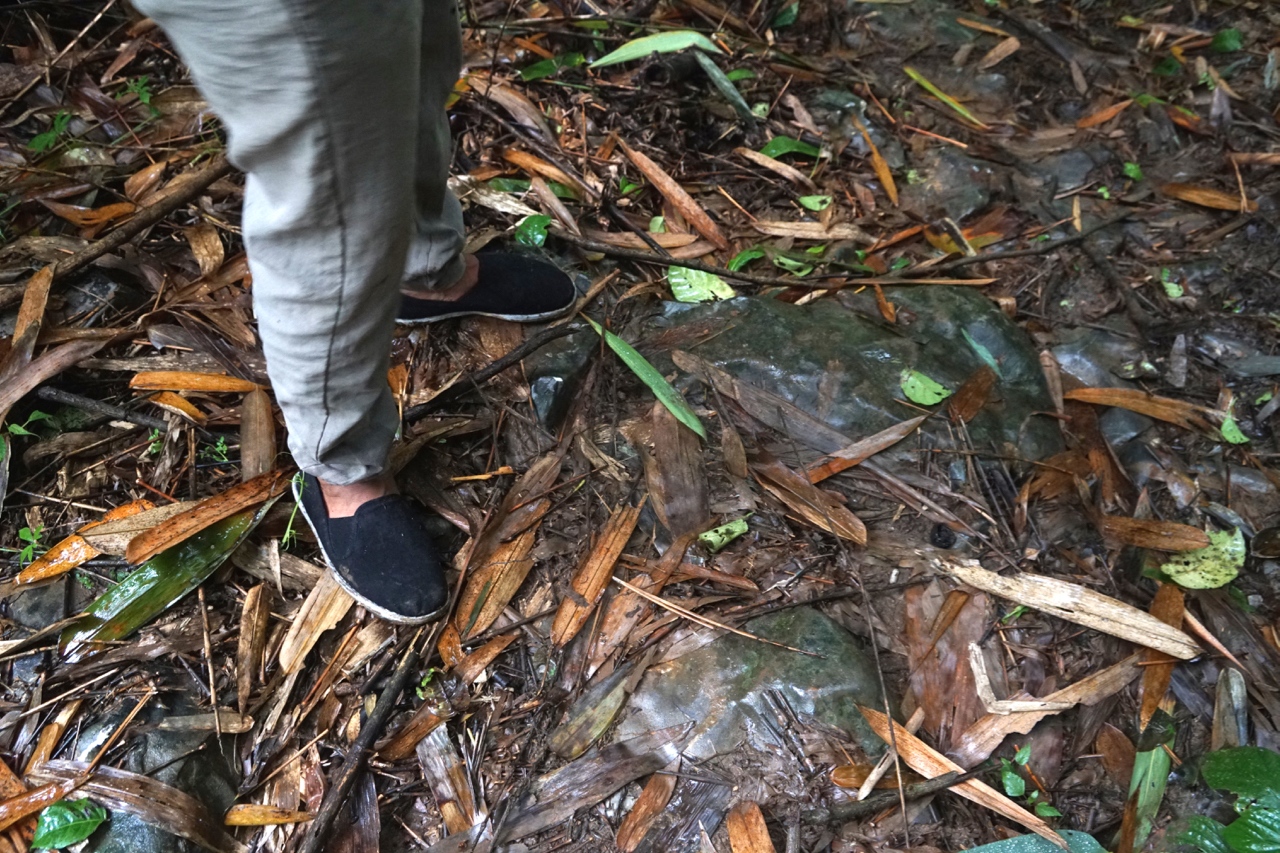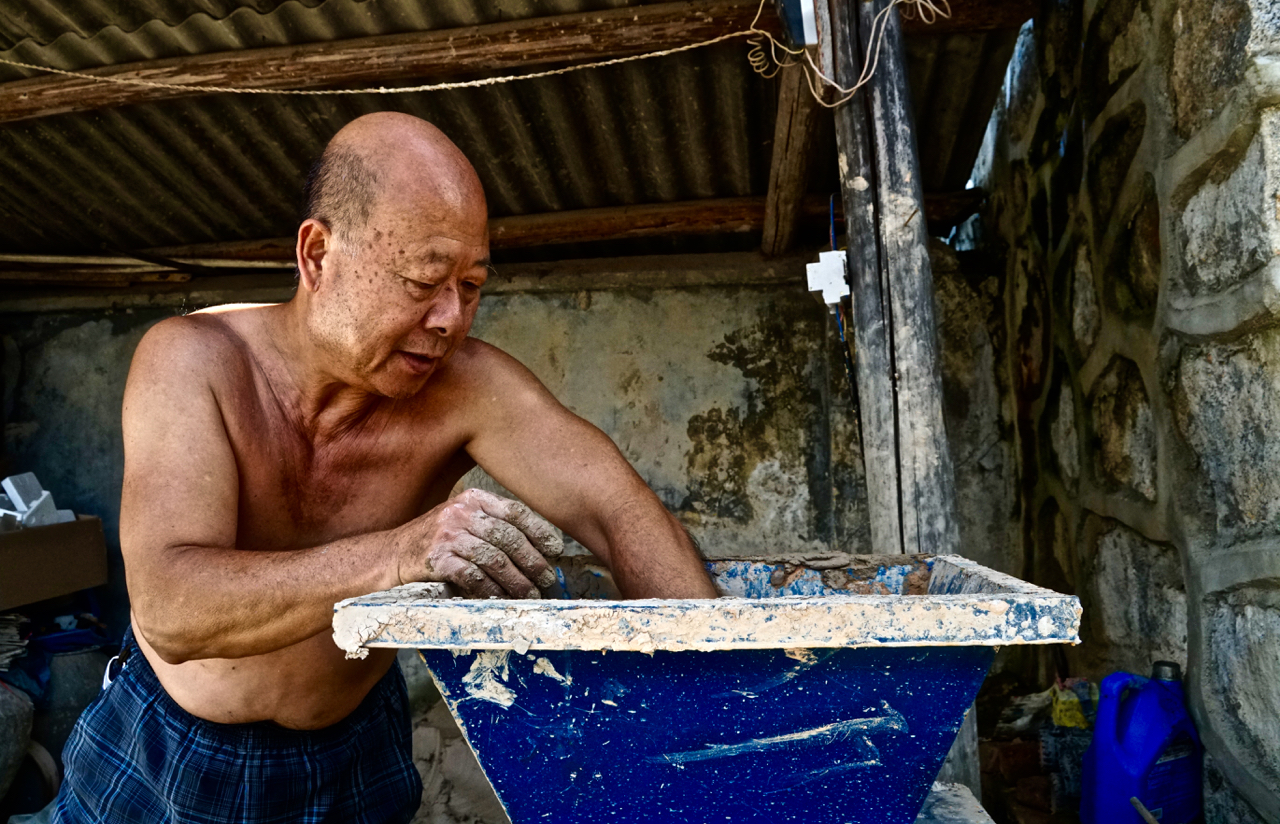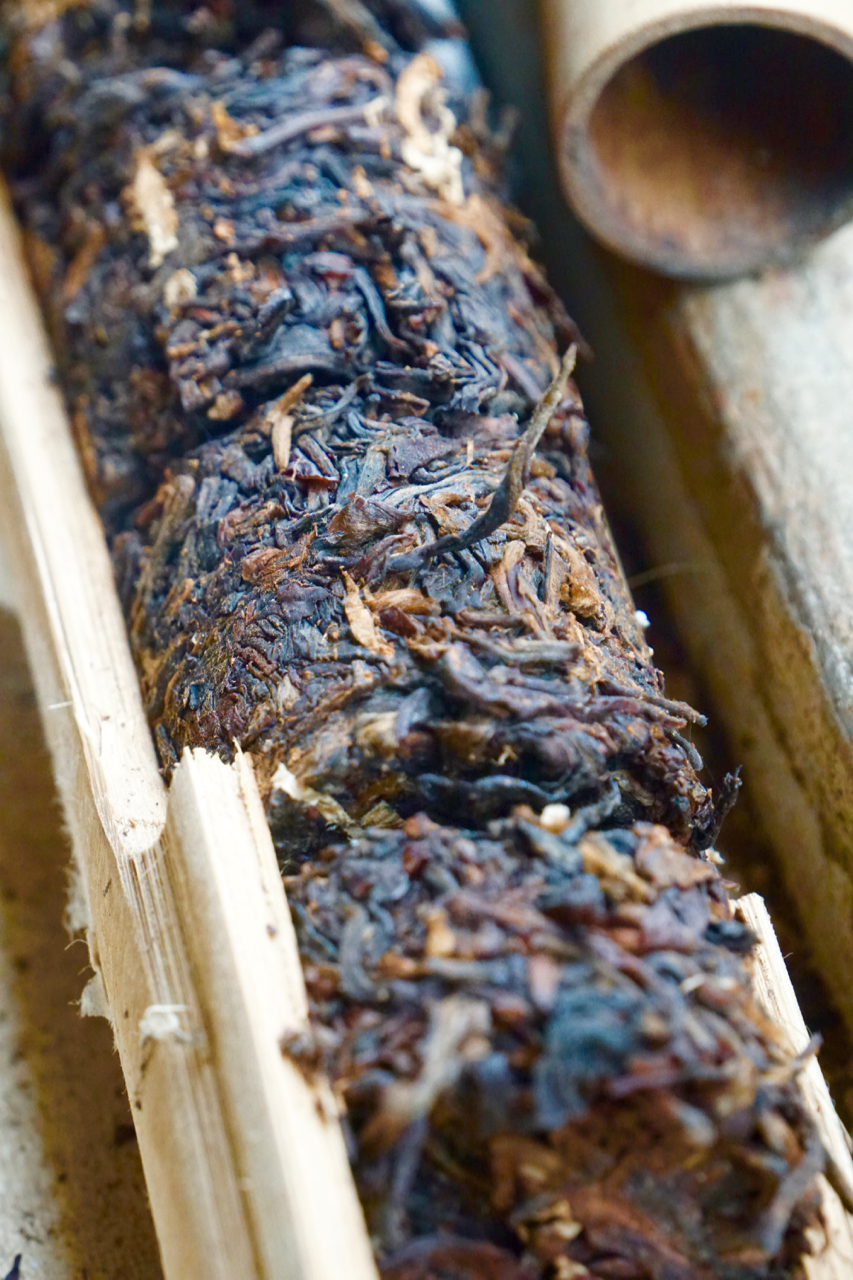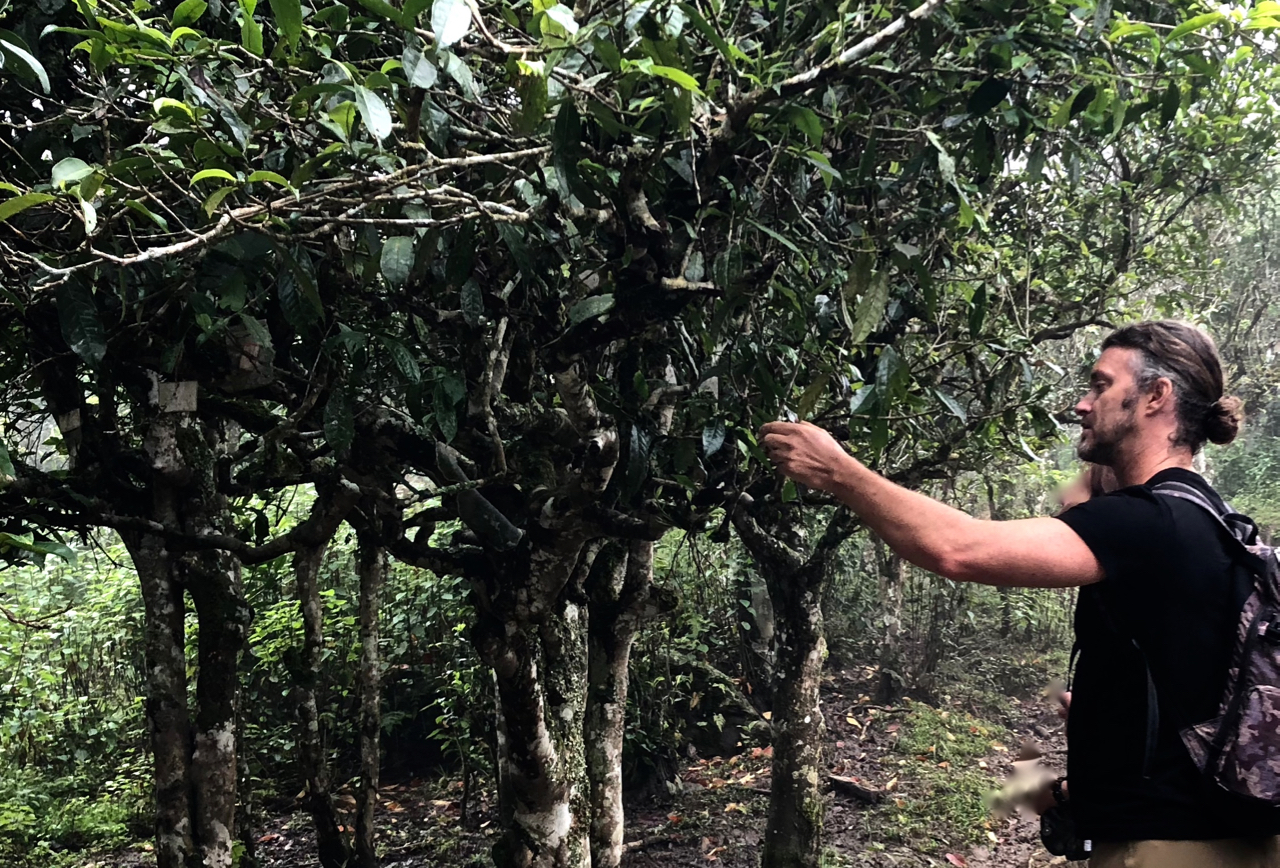Puerh – The Forest
Journeying back into Yunnan’s Xishuangbanna for a later than usual annual immersion into Puerh sourcing, learning and into the clay-heavy heartland of Puerh cultivation. Joined on this journey by Sofie Vercauteren who has been on a months’ long set of immersions into teas’ people, their methods, and into the zones where the glorious green stimulant grows. There is much around Puerh in particular that is linked to the land and this trip reveals some of those other little worlds just to the side.
A journey up into He Kai’s mists and dripping wet and moss adorned branches is an immediate absorption into what makes Puerh and this region so very special. So much that is ‘behind’ Puerh; its’ bio-dynamic soils, with spider webs and all sorts of ‘pests’ making a home in the nook of the branches indicate much that doesn’t fall in the assertion by many that tea is a mono-crop.
Here the soils almost seethe with life and sprays or anything else of man’s has never tainted the tea trees. It continues to be something special that in the Puerh world of pricing, which reportedly reached almost $100k US for one single kilogram of a single ancient tree’s plucking this year, it is precisely because of the simplicity of the source, the rarity of the age, and the utterly straight line between the puck and the cup. Puerh leaves are plucked, withered, pan fried (by hand), rolled (by hand), and dried in the sun and shade.
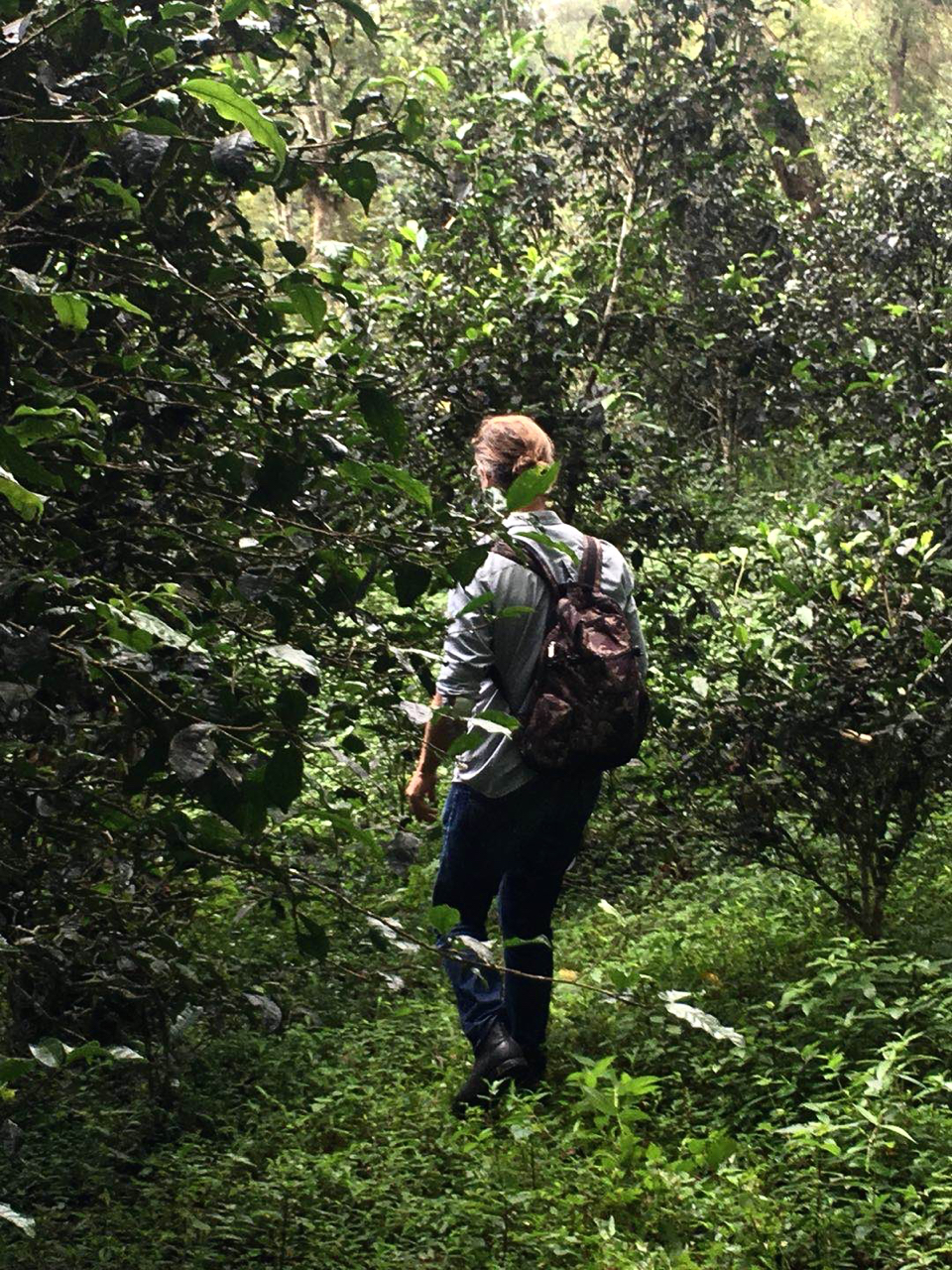
Tracking through some of the forests that have been providing the eternal fuel for centuries. Photo courtesy of Sofie Vercauteren.
Here too, it is soils that are rich in clays, red-orange in colour that provide such a nourishing platform.. Here, within in the mists that shade and diffuse both sun and rain, it is an enclave where a kind of accidental permaculture world exist. Perhaps it isn’t accidental at all…perhaps this is as nature wants it. The heavy clays and minerals contribute to some of the mineral and vegetal content that can find in a classic Puerh. It is in my old mentor, Mr. Gao, and his words that this becomes clear, “Puerh is a reflection of the soil when it is done well”. What the wine world would call a reflection of terroir. There is a Zen Buddhist quote from the Boddhidarma, that says “Motion doesn’t exist without the mind”. In these areas of Puerh production, the mind should, ideally, be moved by a sip of the tea to its soil directly.
The Fry
Visits to the tea houses and friends homes (to eat and drink of the leaf) begin in earnest the day we arrive but it is the forests and the forest dwellers that still hold so much of what makes a Puerh, a Puerh. A remarkably simple line from the plant to the cup, where the hands and leaves are rarely apart is one of the beauties of Puerh. Though machines can customize and manipulate beautifully the leaves, extracting subtleties that verge on brilliance, I still feel a strong love for the ‘no machine’ linear route. Puerh leaves are picked, withered, pan fried, and dried and it is that simple.
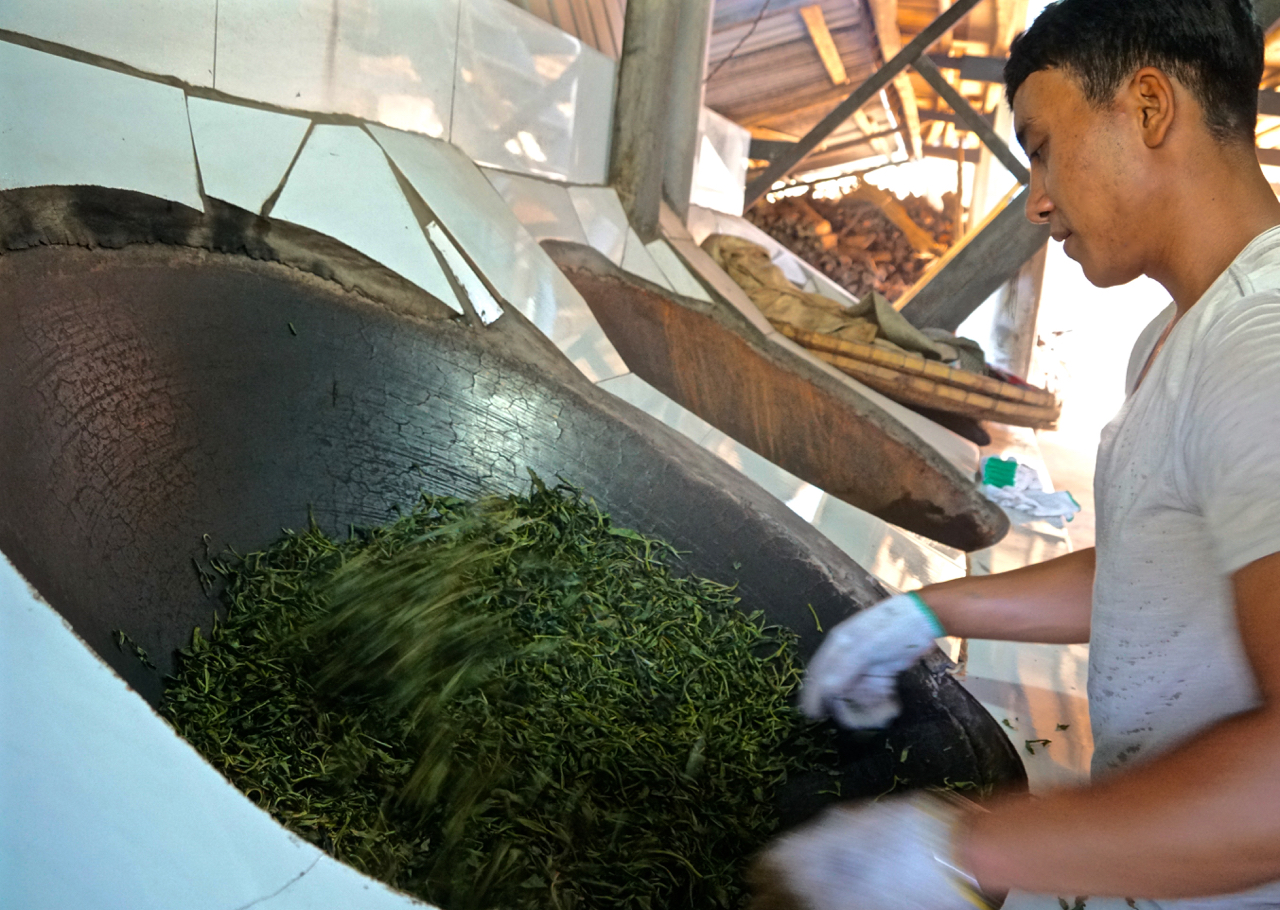
A local of Nannuo Mountain smoothly pan fries leaves from trees that grow quite literally in his back yard forest.
The flavours within are coaxed gently and the terroir in a competently made Sheng (raw) Puerh still is something utterly intact, and buzzing with all things earth.
We visit a small home on Nannuo Shan where we all immerse in a little bit of pan frying which more than anything requires a gentle but constant churning of the leaves to ensure no leaves are left too long upon the pan. The locals’ fluidity flows like a gentle turbine of love and the leaves will be done, “when the nose and hands say it is done”, say Xiao Hui. It is a statement I’ve heard countless times. The master fryers all have their own sensory systems to determine when the leaves are ready for the ‘roll’. That roll is done with a little separation of the leaves as well. The roll will twist the leaves, expel moisture, and seal the leaf before the dry.
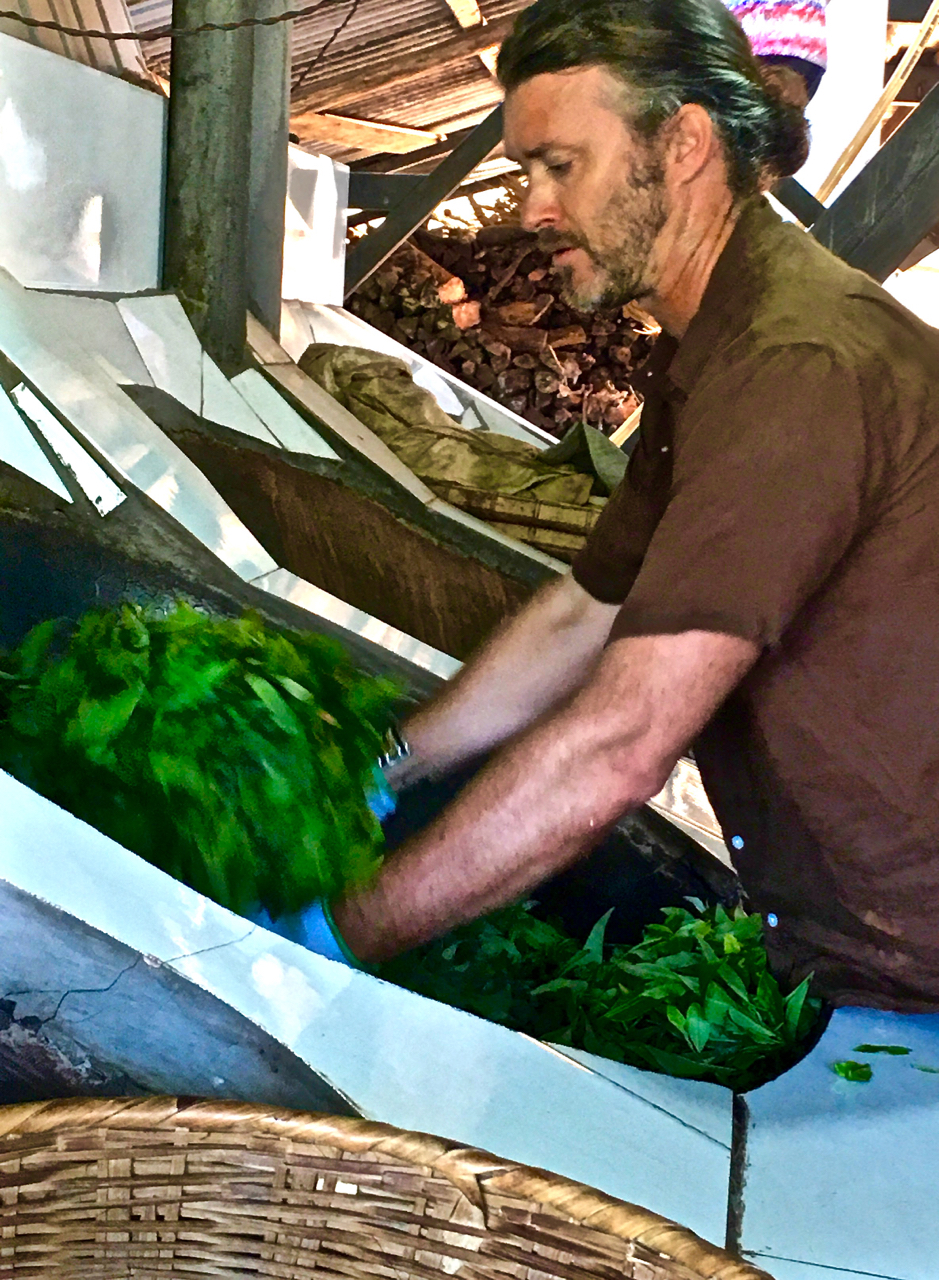
Doing my own version of the fry…an image hides what a video might not. The question of fluency, was, well, a huge question.
My own hasty attempts at frying are tolerated, but only briefly. Competence will care for the leaves far better than my slightly mangled attempts. They are all after all from the ancient trees just out the back of the home. They are still a currency and commodity like few others in the area.
The Sort
The little Dai woman with hands stained with tannin goes through the leaves sorting the ideals from the others, the “yellow sheet” larger and more misshapen leaves found further down the branches. Particles, stems, and other bits are piled to her left to find there way into other (and just as tasty) tea offerings. She chats with other ladies who also plod through the piles of dry leaves, that I’d happily steal away with.
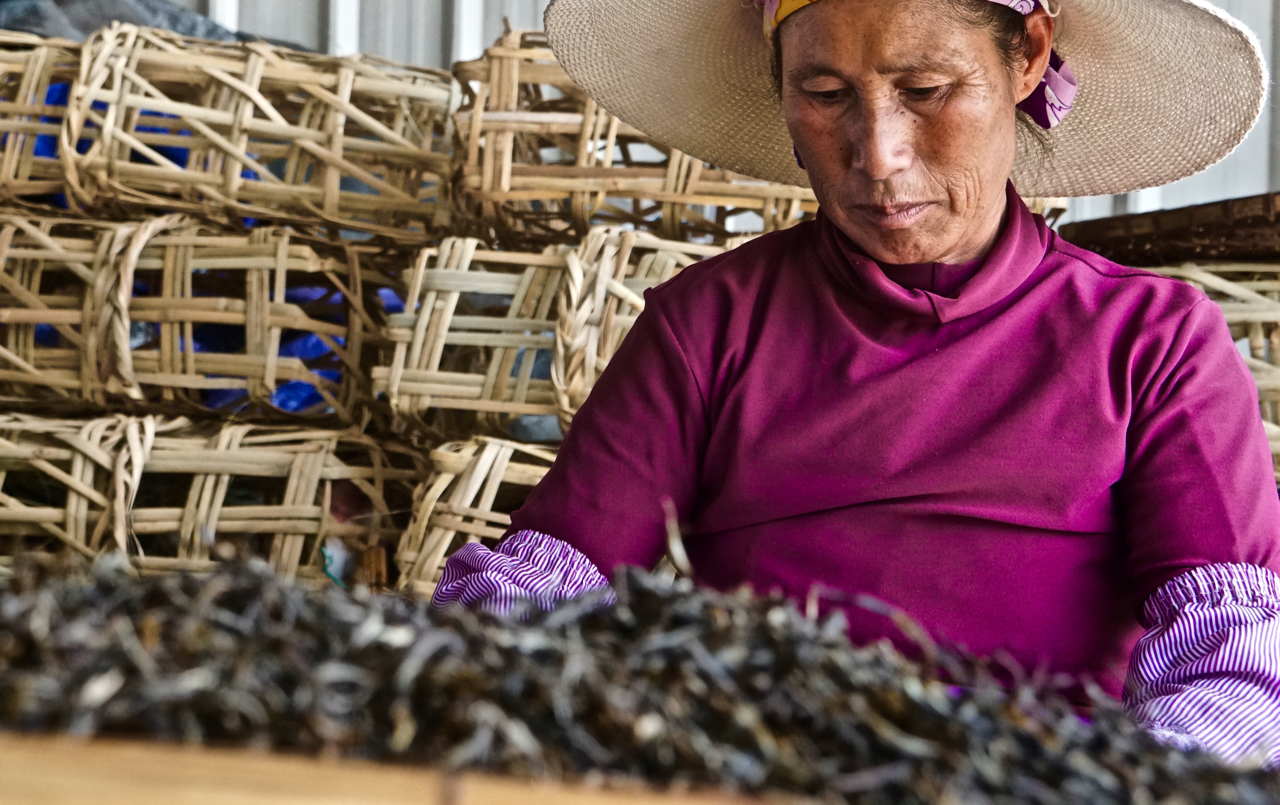
One of the many Dai women who sort out leaves. The Dai minority (linked ethnically and linguistically to the Thai) remain the dominant minority in the Banna region of Yunnan.
We are outside of Menghai city in a Dai stronghold where the mao cha (loose leaf tea) is sorted and steamed into a manageable malleable form, shoved into a cheesecloth type fabric and then shaped into a cake. It is left in its cloth to dry for a while before being given freedom to dry as a simple unadorned cake.
The Trail of the Emperor’s Choice
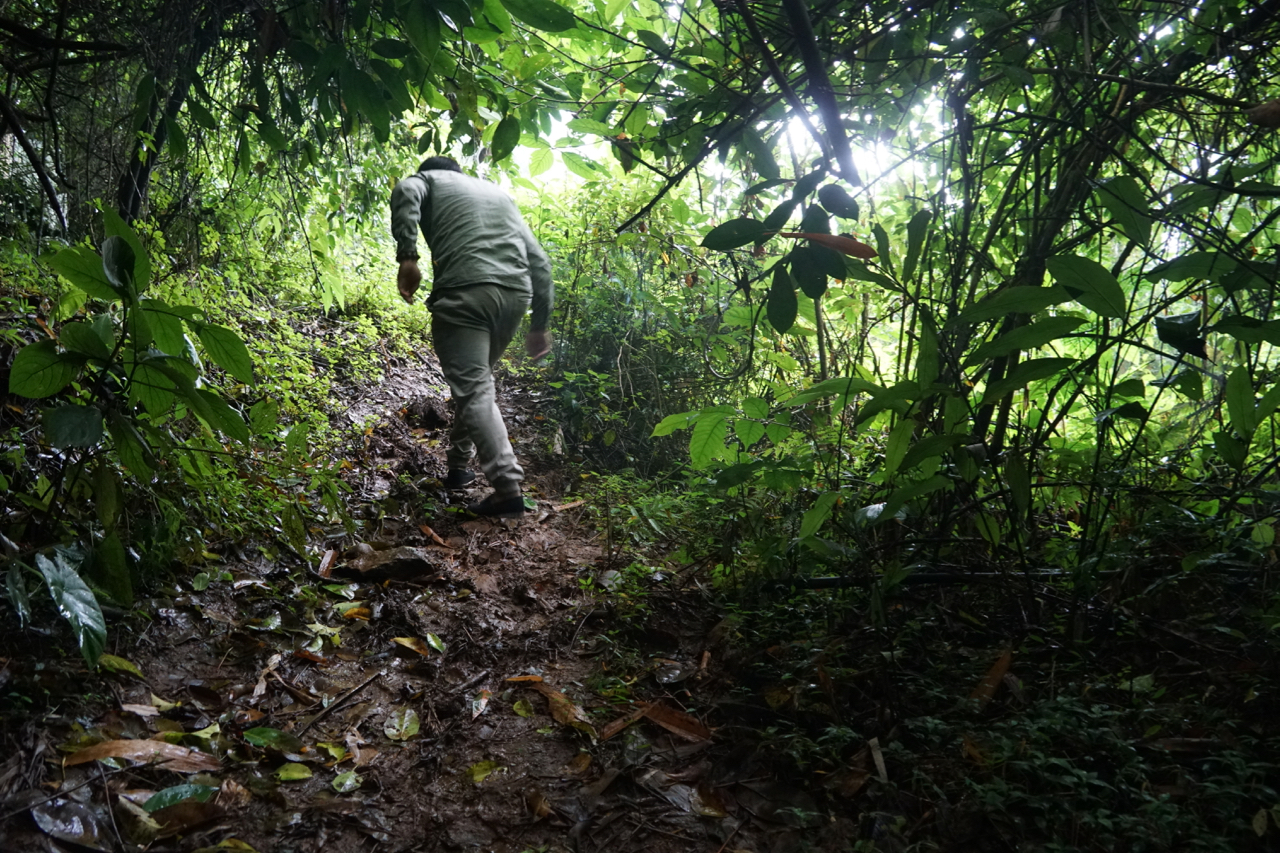
A small vestige of the route that took tea from Yiwu to Beijing along one of the strands of the Tea Horse Road.
Yiwu remains in many minds as the classic Puerh, not simply in character or flavor but in a very historical sense. Yiwu and its surrounds were designated as both a tribute tea to the emperors and a tribute area of growth to the far northeast in Beijing. A tea horse road reached up as far as the capital while other similar ‘tea horse routes’ shot northwest into Tibet, another down into Vietnam and Laos and still another veered directly west into Burma. Anything remotely Tea Horse Road, or a variation of inevitably excites, and it has been awhile since I was last here.
Our little group slides and slips through the green mists along something that is a path…more a vaguely perceptalbe line that had been cleared of trees a long time ago. That vagueness has remained over the centuries and that vague route was part of the Tea Horse Road that gathered in the mountains to move the stimulant fuel north to Beijing on a journey that could take a half a year or more.
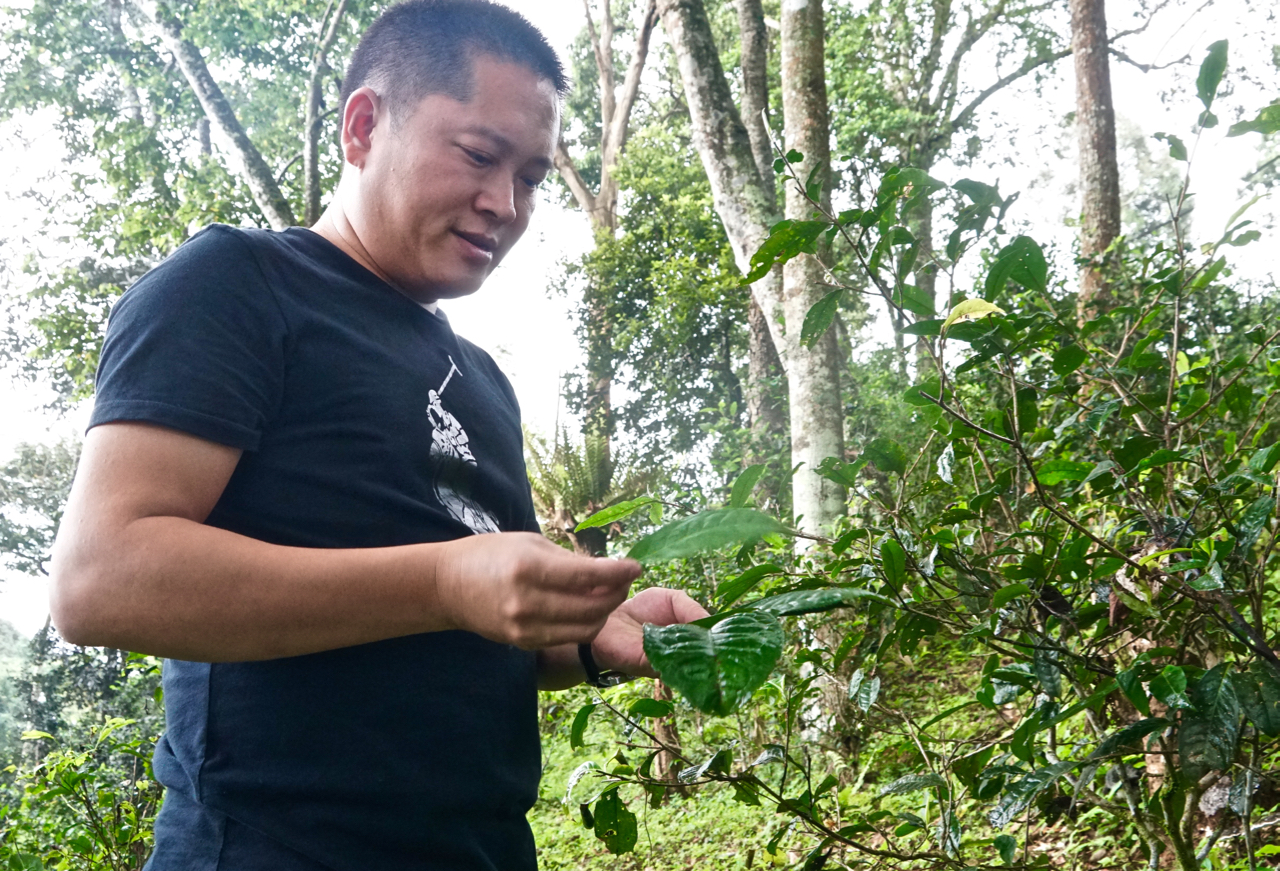
Getting an explanation about the different varietals of leaves that grow in different regions of the Puerh kingdom.
The leaves of Puerh in Yiwu are a smaller varietal than the larger ones in the Menghai and Bulang area and now in the forests, there are portions of the forests that have been inundated with the bigger leaved trees and bushes. Not simply bigger, they offer up a different interpretation of the soil and of themselves in a cup, and they offer up a distinctly different shape as well.
The Potter and the Cylinder
Two little treats (beyond the obvious bit of spoiling of having rampant tea sessions daily and in every possible place and at every possible time) come with the recent journey back into the Puerh fold.
One a little immersion into the space and fingers of a master potter who uses local Yunnan clays to fashion up his own clayware reminding that anywhere there is clay in the soils, there will be those who create tea paraphernalia from them. It isn’t only the famed Yixing region far to the east that can create clayware that belongs with the leaves. Bald, powerfully built and seemingly incapable of work, he works the clay from its taking from the ground until suddenly a form began to take shape. The yard around him is cluttered with clay at every stage of (in)completion with 7 kilns lining a property wall.
I indulge in a few small pieces as a token of my eternal commitment not only to those whose work I love but as a kind of homage to the very soils here in Yunnan that are the source and origin of so much of value in my own world.
The second unexpected – but fully deserved – venture is to a factory outside of Menghai that still produces the classic cylinder, which was once the style and shape by which the Dai minority shipped teas by caravans to lands that they themselves would never see. Rains on this day come down in waves and the factory is forlorn and occupied by a total of three people only and it is beyond everything else a day to tuck in and sip somewhwere.
A young man in camouflage kit is in charge on this day of tight clouds and rain. He whistles this little tune and three birds come to his shoulder immediately from out in the gloom and wet. He tells me he doesn’t want to name them in case they leave one day. He doesn’t want to miss them too much.
In this current version of the bamboo cylinder, known as 竹筒 or ‘Zhú tǒng’ (literally ‘bamboo cylinder) the young bird lover must soften the leaves with steam and once again compress a specified amount of leaves into a bamboo husk. Using a kind of modified plunger, he firmly packs the cylinder tight. The entire package is then placed into a heater and kept there to dry out remaining moisture, before being stored in yet another huge drying hanger. At one point in time, this whole process was far simpler but in this case, the old ways have adapted to a new way.
Beyond the hype of so called ‘aged’ teas, and beyond the almost paralyzing pricing of some of the most coveted of the fresh Spring harvests, Puerh remains something simple and something that reflects the soils from which it came and the hands that have brought it along.

